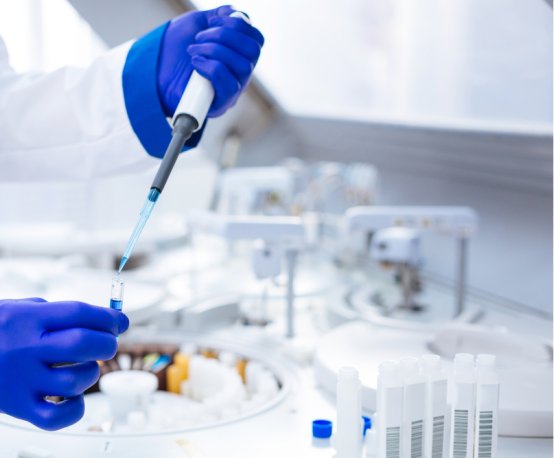Biotin-conjugated antibodies have become essential tools in scientific research, offering exceptional sensitivity and precision in detecting proteins, microorganisms, and molecular targets. By attaching biotin to antibodies, researchers can leverage the high-affinity interaction between biotin and avidin or streptavidin to amplify detection signals. This powerful system is widely used in immunoassays such as ELISA, Western blotting, and immunohistochemistry, enabling more reliable and accurate analytical outcomes.

Overview of Biotin-Conjugated Antibodies
Biotin-conjugated antibodies represent a major advancement in molecular biology and immunodetection techniques. These antibodies are chemically linked with biotin, a small, water-soluble vitamin known for its strong affinity to avidin and streptavidin. This interaction allows scientists to connect the antibodies to different detection agents with remarkable specificity and efficiency. The process effectively transforms standard antibodies into versatile tools for multiple research applications, including flow cytometry, ELISA, and immunohistochemistry.
Conjugation Chemistry and Preparation
The creation of biotin-conjugated antibodies involves chemically coupling biotin molecules to antibodies, typically through N-hydroxysuccinimide (NHS) ester derivatives of biotin. These react with lysine residues on the antibody, forming stable amide bonds. Critical reaction parameters—such as the biotin-to-antibody ratio, temperature, and pH—must be optimized to ensure strong conjugation while preserving the antibody’s antigen-binding capacity.
Adjusting the level of biotin attachment is key. A moderate biotin density allows strong interaction with streptavidin, improving signal detection. However, excessive biotinylation may reduce binding efficiency due to steric hindrance near the antibody’s active sites. Therefore, achieving a balance through empirical testing ensures both high sensitivity and maintained specificity.
Applications in Immunodetection Methods
Enzyme-Linked Immunosorbent Assay (ELISA)
In ELISA procedures, biotinylated antibodies detect target antigens through a two-step binding system. The biotinylated antibody first binds the antigen, followed by the attachment of streptavidin conjugated to an enzyme such as horseradish peroxidase (HRP) or alkaline phosphatase. The subsequent enzymatic reaction generates a measurable signal, offering a significant improvement in sensitivity compared to direct detection methods.
Western Blotting
In Western blot assays, biotin-conjugated antibodies are used after proteins are transferred onto a membrane. The antibody binds specifically to the target protein, which is then visualized using a streptavidin-enzyme or fluorophore conjugate. The high-affinity biotin-streptavidin interaction produces strong, precise signals, even for proteins present in low concentrations.
Immunohistochemistry (IHC) and Immunocytochemistry (ICC)
These techniques use biotinylated antibodies to detect specific antigens within tissue sections or cells. Once the biotinylated antibody binds the target, a streptavidin-reporter complex—often linked to HRP—is added to produce a visible signal. This enhanced visualization helps researchers and clinicians study the spatial distribution of biomarkers, providing critical insights for diagnostic and pathological analysis.
Flow Cytometry
In flow cytometry, cells are labeled using biotinylated antibodies followed by fluorescent streptavidin conjugates. The resulting strong and stable fluorescence enables precise measurement and sorting of cells expressing particular markers. This approach facilitates high-throughput cellular analysis, widely used in immunology, hematology, and cancer research.
Advantages and Limitations of Biotin-Conjugated Antibodies
The biotin-streptavidin system offers several benefits. Its exceptionally stable and high-affinity interaction ensures consistent assay performance, even under challenging conditions. The modular design also allows researchers to easily switch between different detection systems—colorimetric, fluorescent, or chemiluminescent—without altering the antibody itself, improving flexibility and reducing development time.
However, potential drawbacks include background interference caused by endogenous biotin or free biotin present in biological samples, which may lead to nonspecific binding. Implementing effective blocking steps or optimized assay conditions can minimize this issue. Furthermore, maintaining proper conjugation control is critical to avoid reducing the antibody’s antigen-binding efficiency.
Future Developments and Research Directions
Advances in antibody engineering and conjugation chemistry are continuing to enhance the effectiveness and versatility of biotin-conjugated antibodies. Innovations such as modified streptavidin with reduced nonspecific interactions and tunable binding strengths are being developed to improve detection accuracy.
In addition, biotin labeling is being explored in next-generation applications such as live-cell imaging, targeted drug delivery, and viral vector tracking. With the rise of multiplexed detection platforms, biotin-conjugated antibodies now enable simultaneous analysis of multiple biomarkers in complex samples using spectrally distinct fluorescent tags. This capability is transforming fields like cancer diagnostics and personalized medicine.
Integrating biotin-conjugated antibodies with mass spectrometry is also an emerging trend, offering powerful new ways to identify proteins and molecular pathways with exceptional precision.
Conclusion
Biotin-conjugated antibodies have become a cornerstone of modern biomedical and molecular research, offering unparalleled signal amplification, flexibility, and specificity. By leveraging the strong biotin-streptavidin interaction, these antibodies enhance the performance of ELISA, Western blotting, IHC, and flow cytometry assays. Although issues such as nonspecific binding and optimal conjugation ratios remain technical challenges, continuous innovation in conjugation chemistry and detection technology is rapidly addressing these concerns. As research tools evolve, biotin-conjugated antibodies will continue to play a central role in improving detection accuracy and advancing biological discovery.
